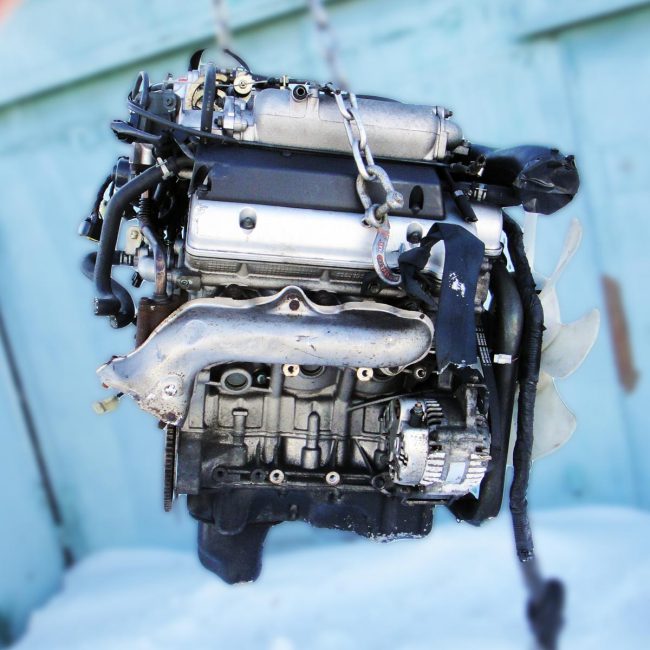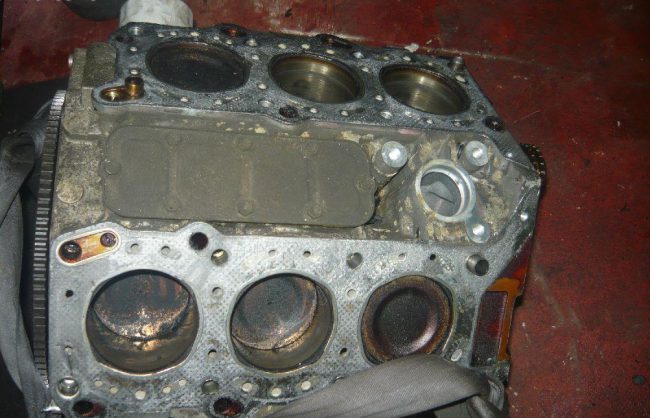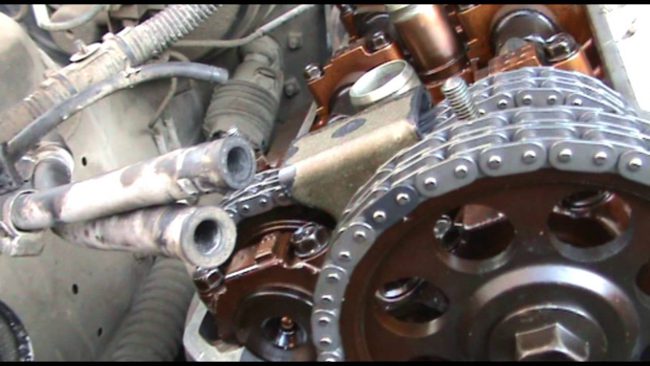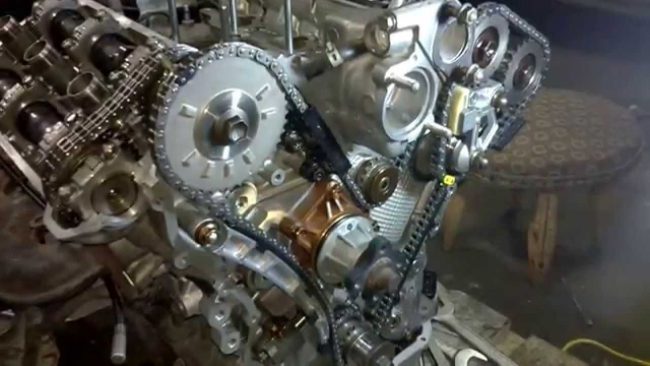
Suzuki H20A engine
A competent approach to the design and creation of products is exactly what cannot be taken away from all automakers from Japan. In addition to producing reliable and functional cars, the Japanese make no less good engines.
Today our resource decided to highlight one of the most interesting Suzuki ICE called "H20A". About the concept of creating this engine, its history and features of operation, read below. We assure you that the presented material will be useful to both current and potential owners of the unit.
Creation and concept of the engine
In 1988, Suzuki launched the Vitara crossover. Since at that time compact SUVs were a curiosity, the manufacturer's new model range immediately gained immense popularity and won the hearts of many motorists.
 The sudden surging, partly unexpected demand for the crossover forced the Japanese to support it in every possible way by improving the model. If everything is clear with the restyling of the car, then no one expected changes in the Vitara engine line. Regardless, Suzuki surprised everyone.
The sudden surging, partly unexpected demand for the crossover forced the Japanese to support it in every possible way by improving the model. If everything is clear with the restyling of the car, then no one expected changes in the Vitara engine line. Regardless, Suzuki surprised everyone.
In the early 90s, the Japanese began designing new engines for their crossover. Not technically, nor morally used at that time, the units were not outdated, but the desire to improve the lineup took over and the concern designed a line of engines of a fairly limited series marked “H”.
The H20A considered today was used only in the Vitara crossover. To be more precise, the model was equipped with this internal combustion engine in the period from 1994 to 1998.
With the completion of the release of the first generation of crossovers, the production of the H20A was also "wrapped up", so it is very difficult to find it now in either a supported or a new form.
There is nothing bad to say about this engine. Its functionality and level of reliability are at a very high level, so the H20A did not find any criticism from its exploiters. However, during the 90s of the last century, the line of engines marked "H" was a kind of transitional link between gradually obsolete units and technically, morally updated. That is why the H20A and its counterparts were used in limited series, being simply excellent internal combustion engines for any type of car.
The H20A concept is a typical V-engine with 6 cylinders and 4 valves per cylinder. The salient features of its design are:
- Gas distribution system on two shafts "DOHC".
- Liquid cooling.
- Injection power system (multi-point fuel injection into cylinders).
The H20A was built according to the standard technology at the beginning of the 90s and 00s using aluminum and cast iron alloys. Since this motor was installed only on Vitara, it does not have a lightweight, more powerful or turbocharged variation.
 H20A was produced except in one version - petrol, 6-cylinder aspirated. Moderately simple, but at the same time technically competent design allowed the unit to fall in love with many Suzuki fans. No wonder the H20A is still in operation on 20-year-old crossovers and “feels” more than fine.
H20A was produced except in one version - petrol, 6-cylinder aspirated. Moderately simple, but at the same time technically competent design allowed the unit to fall in love with many Suzuki fans. No wonder the H20A is still in operation on 20-year-old crossovers and “feels” more than fine.
Specifications H20A
| Manufacturer | Suzuki |
|---|---|
| Motor brand | H20A |
| Years of production | 1993-1998 |
| Cylinder head | aluminum |
| Food | distributed, multipoint injection (injector) |
| Construction scheme | V-shaped |
| No. of cylinders (valves per cylinder) | 6 (4) |
| The piston stroke, mm | 70 |
| Cylinder diameter, mm | 78 |
| Compression ratio, bar | 10 |
| Engine displacement, cubic meters cm | 1998 |
| Power, HP | 140 |
| Torque, Nm | 177 |
| Fuel | gasoline (AI-92 or AI-95) |
| Environmental standards | EURO 3 |
| Fuel consumption per 100 km of track | |
| - in the city | 10,5-11 |
| - along the track | 7 |
| - in mixed driving mode | 8.5 |
| Oil consumption, grams per 1000 km | to 500 |
| Type of lubricant used | 5W-40 or 10W-40 |
| Oil change frequency, km | 8-000 |
| Engine resource, km | 500-000 |
| Modernization options | available, potential - 210 hp |
| Serial number location | the rear of the engine block on the left, not far from its connection with the gearbox |
| Equipped models | Suzuki Vitara (alternate name - Suzuki Escudo) |
Note! Again, the Suzuki "H20A" motor was produced in only one version with the above parameters. It is impossible to find another sample of this engine.
Repair and service
As noted earlier, the H20A has a high level of reliability. This state of affairs is relevant for all Suzuki engines due to a competent and responsible approach to their design and creation by the concern.
Judging by the reviews of Vitara owners, the unit considered today is almost a quality standard. With systematic and high-quality maintenance, its malfunctions are a rarity.
 Practice shows that the H20A has no typical breakdowns. More or less often, this motor has problems of the type:
Practice shows that the H20A has no typical breakdowns. More or less often, this motor has problems of the type:
- noise of the timing chain;
- incorrect operation of the idle speed sensor;
- minor malfunctions in the functioning of the oil supply system (increased appetite for lubricant or its smudges).
In most cases, the noted malfunctions appear in the H20A with a sufficiently high mileage. For many engine operators, they were not observed before a mileage of 100-150. Problems with the H000A are solved by contacting any service station (it may not even be for servicing Suzuki installations).
Engine repair costs are low. It is better not to engage in self-elimination of its breakdowns due to its V-shaped design. It happens that even experienced repairmen cannot cope with putting it in order.
In the absence of malfunctions, it is important not to forget about the correct maintenance of the H20A, which guarantees the motor long and trouble-free years of life. The optimal solution would be:
- monitor the stability of the oil level and carry out its complete replacement every 10-15 kilometers;
- systematically change consumables according to the technical documentation for the installation;
- do not forget about the overhaul, which should be carried out every 150-200 kilometers.
 Proper operation and competent maintenance of the H20A will allow you to “squeeze” out of it the maximum resource of half a million kilometers and even more. In practice, this is often the case, which is confirmed by the numerous reviews of Vitara owners and car repairmen.
Proper operation and competent maintenance of the H20A will allow you to “squeeze” out of it the maximum resource of half a million kilometers and even more. In practice, this is often the case, which is confirmed by the numerous reviews of Vitara owners and car repairmen.
Tuning
H20A upgrades are rare. The “fault” is the good reliability of the motor, which motorists do not want to reduce with conventional tuning. No matter what anyone says, it is almost impossible to avoid the loss of a resource with an increase in the power of the internal combustion engine. If we turn to the modernization of the H20A-x, then you can try:
- install a moderately powerful turbine;
- slightly upgrade the power system;
- strengthen the design of the CPG and timing.
High-quality tuning of the H20A will allow you to smoke it from stock 140 horsepower to 200-210. In this case, resource losses will be from 10 to 30 percent, which is quite significant. Is it worth losing in reliability for the sake of power - everyone decides for himself.


One comment
daryl
Where can I get the manual for the H20A V.6 2.0 engine, I need to know the parts since there is a pipe that comes from the exhaust to the throttle body where they did not block it and I don't know what it is for.